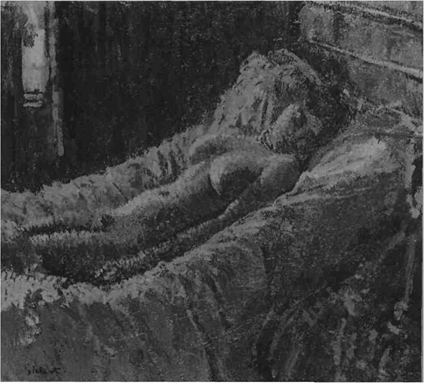Andrew Graham-Dixon on British painters' flight into Camden and how childhood didn't grow up
LOOKING down from the window of his North London bedsitter in the summer of 1911, Spencer Frederick Gore tried his hand at some plein air Impressionism. Gore's subject was Mornington Crescent Gardens, NW1, but he painted this patch of greenery and the surround-ing buildings like a dusty, sun-drenched civic square somewhere in the South of France. Gore's handling is characteristically French fluid and relaxed, a cross between mid-period Monet and Pissarro* Walter Sickert the driving force behind the Camden Town Group, now extensively investigated in a temporary exhibition at Christie's once described Gore's (and his own) chosen habitat: "The trained trees rise and drop in fringes, like fountains over the little well of greenness and shade where parties of young people are playing at tennis."
Go to Gore's house today, at 31 Mornington Crescent Sickert was a few doors along at number 6 and it's hard to imagine how this particular urban wasteland could ever have been chosen as the headquarters of Britain's most determinedly Francophile, Impressionist-influenced art movement. Sickert's "little well of greenness" has been replaced by the blocky mass of the Carreras factory, which neighbours an Esso petrol station; the crescent itself gives on to a major four-lane road, part of Camden's filth-generating one-way system. On a bad day, you'll see parties of young people glue-sniffing.
But you shouldn't be fooled, by Gore's painting, into indignant post-town planning nostalgia for the days when London was a quiet, tree-lined gem of a city. Gore represents the sunny' side of "The Painters of Camden Town". Sickert was the movement's heart and soul, and it is he who emerges as the single indisputable master of the group. The Camden Town that Sickert migrated to was never Gore's...


